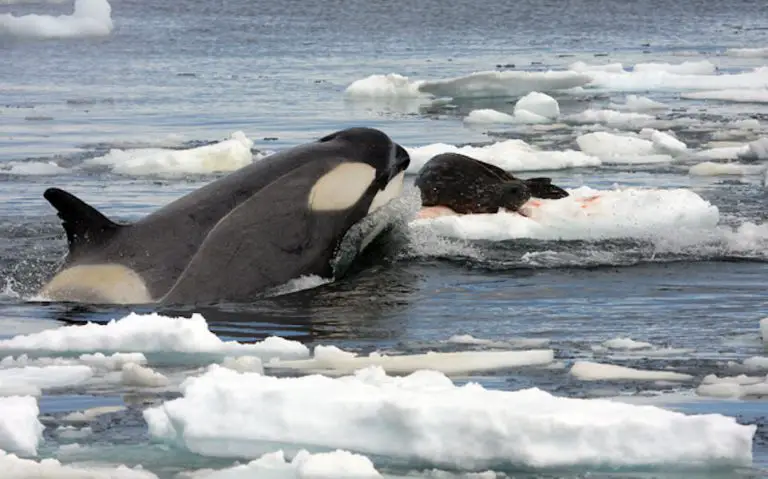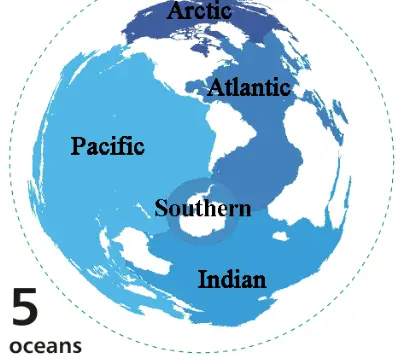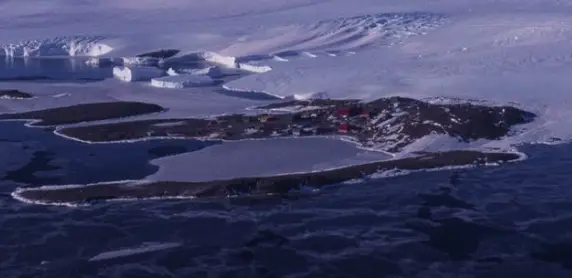
INTERESTING FACTS ON THE SOUTHERN OCEAN !!!
The Southern Ocean surrounds the South Pole and Antarctica, and is the only ocean that travels all the way around our planet.
The Southern Ocean was formed only 30 million years ago, when South America and Antarctica separated, making it the youngest ocean.
The Southern Ocean is also known as the Antarctic Ocean or the Austral Ocean.
Parts of the Southern Ocean freeze in the winter, forming huge blankets of ice. Icebergs will also be found drifting in the water, some of which could be several hundred meters high. So when you take the strong winds in as well, it makes crossing the ocean highly dangerous. Ice-breaker ships often need to escort ships on their passage through the waters.
The Southern Ocean’s proximity to the South Pole causes it to experience one of the most extreme weather conditions.
It is thought that if all the ice-blankets and ice-bergs were to melt in the Southern Ocean, the oceans around the world could all rise by 65 meters.
The Southern Ocean is known today as the fifth and newest world ocean by the International Hydrographic Organization. The IHO confirmed the existence of the ocean in the year 2000.
The Southern Ocean is the fourth largest ocean of planet Earth’s five oceans, after the Pacific Ocean, the Atlantic Ocean and the Indian Ocean, but it’s larger than the Arctic Ocean.

Earth also has smaller bodies of water that are partly enclosed by land, called the seas. The three largest seas are the Caribbean Sea, the Mediterranean Sea and the South China Sea.
The Southern Ocean in size is approximately 20.3 million sq km, or 7.8 million sq miles.
The Southern Ocean is about twice the size of the USA.
The Southern Ocean covers 6% of the Earth’s surface.
The water temperature of the Southern Ocean varies from -2°C to 10°C (28°F to 50° F). Climate conditions depends on the seasons. The coldest is the winter, when the water temperature can go as low as -65°C (-85°F).
Despite the cold temperatures, over 50,000 tourists explore the Southern Ocean every year.
The summer season in the Southern Ocean runs from October to February, while the winter season runs from March to September.
The average depth of the Southern Ocean is around 3,350 meters (10,991 ft).
The deepest point in the Southern Ocean with a depth of over 7,000 meters (23,000 feet), is in the South Sandwich Trench. This is located west of the Mid-Atlantic Ridge, between South America and Antarctica.
The biggest waves occur in the Southern Ocean. The waves can grow as high as 60 feet (18 meters) by the time they reach the shores of Hawaii, due to the strong winds that sweeps them around Antarctica. The further a wave travels, the bigger it gets, thus transforming them into massive plunging breakers.
The floor of the Southern Ocean has not been extensively explored, but scientists do believe that beneath them are immense deposits of oil, natural gas and gold deposits.
Despite being located on one of earth’s most remote regions, the Southern Ocean has several ports constructed on it’s shores. Some of the major ports are Mawson station, Palmer Station and Rothera Station.

Most of the ports in the Southern Ocean are operated by government research stations, and are closed to private and commercial vessels.
The largest invertebrate found on Earth is the giant squid, which lives in the Southern Ocean. It can grows up to 15 meters/49 feet in length.
The Southern Ocean is home to the world’s largest penguin species, the Emperor Penguin. It’s also home to the wandering albatross, blue whales and fur seals.
The blue whale, one of the largest animals of the world is found in significant numbers in the Southern Ocean, due to the abundance of Antarctic Krill, on which the blue whale feeds.
The Southern Ocean’s water consist of many nutrients which encourages phytoplankton to grow. The plankton, which are tiny plants and animals, provide food for fish, mammals and birds.
In recent years there has been a decline in the growth of phytoplankton in the Southern Ocean. This is a cause for alarm, as the phytoplankton is the main food for Krill, a key species of the oceans ecosystem. From recent studies carried out, this has been blamed on the ultraviolet radiation from the Sun.
Birds found in Southern Ocean include the albatross, terns, petrels and gulls.
Several big yacht races are held during the summer season in the Southern Ocean. The well known ones are the Volvo Ocean Race, and the Global Challenge.





